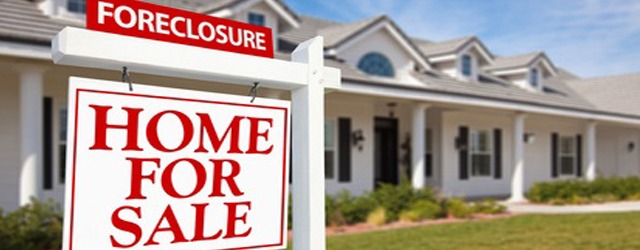Statewide foreclosure activity flat in 2016; nationwide filings down 13.4%
by January 23, 2017 11:27 am 571 views

In a report released Jan. 12, California-based Attom Data Solutions, which tracks national housing data, said there were foreclosure filings (default notices, scheduled auctions and bank repossessions) on 5,128 properties in Arkansas in 2016, essentially flat (down 0.15%) from 5,120 foreclosures in 2015.
The year-over-year comparison is more stable from previous years when Attom reported 3,971 foreclosures in Arkansas in 2014, 7,786 in 2013 and 4,599 in 2012.
Northwest Arkansas’ two-county metropolitan statistical area showed a sizable decline in foreclosure filings during 2016. There were a combined 570 foreclosure filings last year in Benton and Washington counties, down 29.6% from 810 filings in 2015. By county, Benton County’s 395 foreclosure filings last year were down 29.2% from 2015 and its lowest level since 2006, when there were 445. Washington County’s 175 foreclosures last year were down 30.5% from 2015.
Foreclosure filings in the Fort Smith metro (Sebastian and Crawford counties) last year totaled 295, up 34% from 220 filings in 2015. By county, Sebastian County’s 188 foreclosures last year were up 28.7% from 2015. Crawford County’s 107 foreclosures in 2016 were up 44.5% from the previous year.
Attom also reported an increase in foreclosure filings in Craighead County (Jonesboro) for the second year in a row. The county’s 114 foreclosure filings in 2016 were up compared to 86 in 2015 and 80 in 2014.
Pulaski County was relatively flat in its foreclosure filings last year – 1,240 in 2016 compared with 1,265 in 2015 – but the activity in Arkansas’ largest county was up 76% from 704 foreclosures in 2014.
Among the state’s 75 counties, Lonoke County (289 foreclosures) had the highest foreclosure rate in 2016 with one foreclosure action for every 97 homes. Saline County (388 foreclosures) had one foreclosure for every 118 homes, Crittenden County (158 foreclosures) one for every 136, Pulaski County (1,240 foreclosures) one for every 144 and Faulkner County (304 foreclosures) one for every 158.
Benton County’s 395 foreclosures last year equals one for every 241 properties, which ranks ninth among the state’s 75 counties. Washington County’s 175 foreclosure filings rank 40th, with one foreclosure for every 507 properties. The statewide foreclosure rate last year was one foreclosure for every 259 properties.
ECONOMIC ANALYSIS
Michael Pakko, chief economist for the University of Arkansas at Little Rock’s Institute for Economic Advancement, said there are three factors at work when evaluating yearly changes in foreclosure data. The first are the inevitable fluctuations over short periods of time, which aren’t closely tied to current economic conditions.
But there is also an element related to long-term trends, and in that regard it’s important to consider other long-term factors.
Northwest Arkansas, Pakko explained, was the only region of the state to experience the real estate boom-and-bust of the previous decade. But since 2011, when home prices in the region bottomed out with a decline of almost 20% on average, the area has followed a consistent upward trajectory.
“The real estate market is recovering and improving, along with the rest of the regional economy, so in that context it’s not surprising to see other data in the real estate market – like foreclosures – also improving,” he said.
In parts of the state that didn’t see a significant real estate collapse, Pakko said, there hasn’t been the same kind of rebound, because the markets didn’t fall to the same depths to begin with.
“And that brings us to the third factor – short-term fluctuations that do contain information about underlying conditions,” Pakko said. “The economy of Northwest Arkansas has clearly been doing well in recent years, so that undoubtedly contributes to the improving picture on foreclosures. Other parts of the state, have been growing, albeit slowly. The [foreclosure] increases in places like Fort Smith, Jonesboro and central Arkansas are therefore pieces of information that are potentially indicators of weakening economic conditions.”
NATIONAL NUMBERS
Nationwide, Attom reported foreclosure filings on 938,173 U.S. properties last year, down 13.4% from 2015 to the lowest level since 2006, when there were 717,522 U.S. properties with foreclosure filings. It’s the first time in a decade the number of foreclosures was fewer than 1 million.
“The national foreclosure rate stayed within an historically normal range for the third consecutive year in 2016, even as banks continued to clear out legacy foreclosures from the last housing bubble, particularly in the final quarter of the year,” said Daren Blomquist, senior vice president at Attom Data Solutions. “Foreclosures completed in the fourth quarter had been in the foreclosure process 803 days on average, a substantial jump from the third quarter and indicating that banks pushed through significant numbers of legacy foreclosures during the quarter.
“Despite that push, we still show that more than half of all active foreclosures nationwide are on loans originated between 2004 and 2008, with a much higher share of legacy foreclosures in some markets.”
